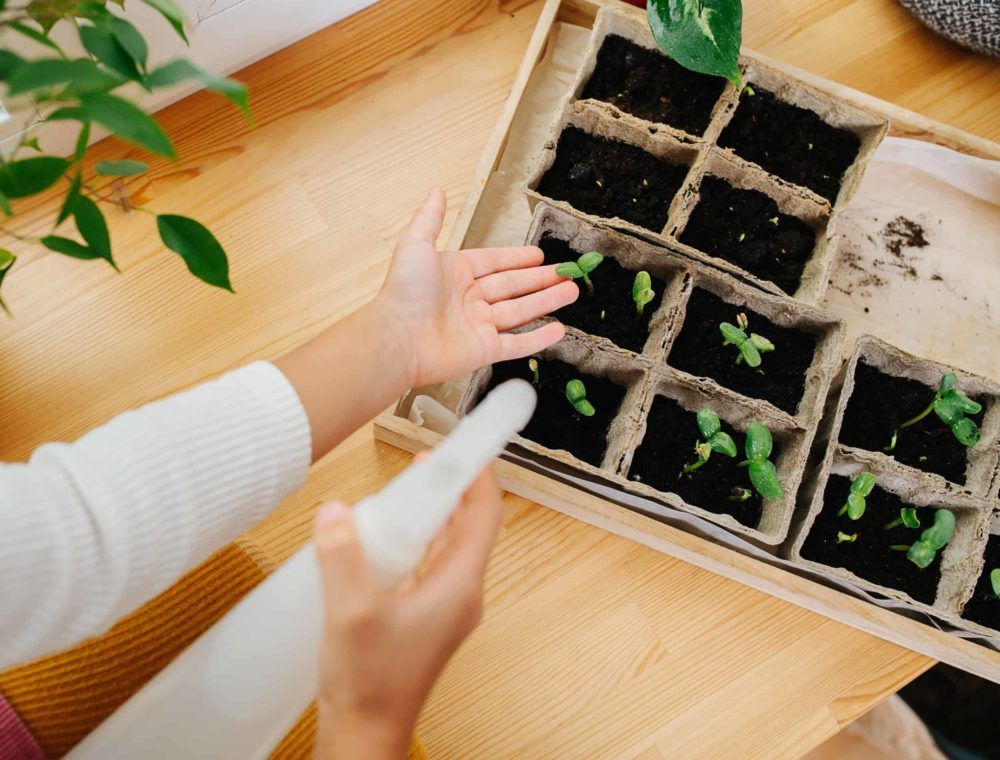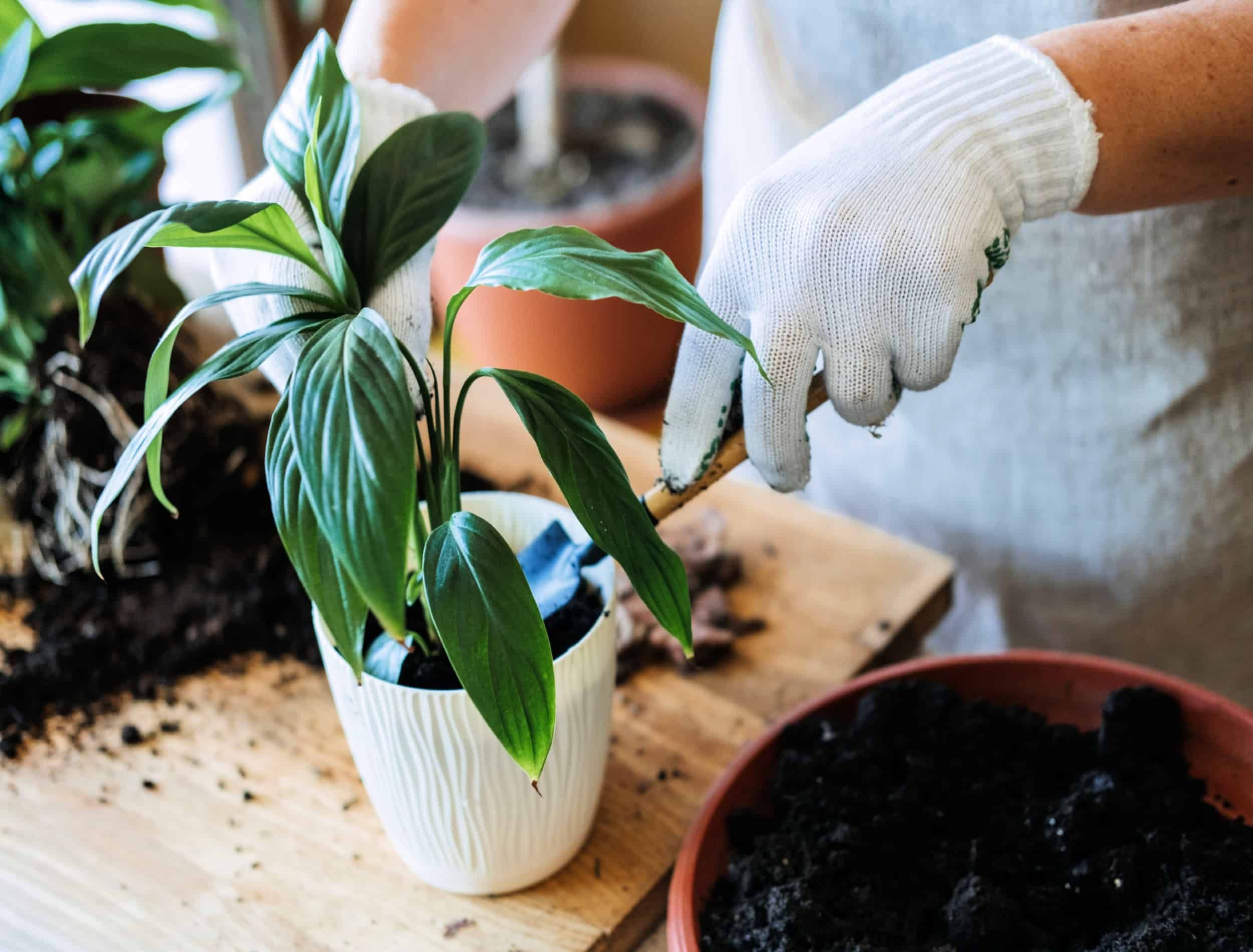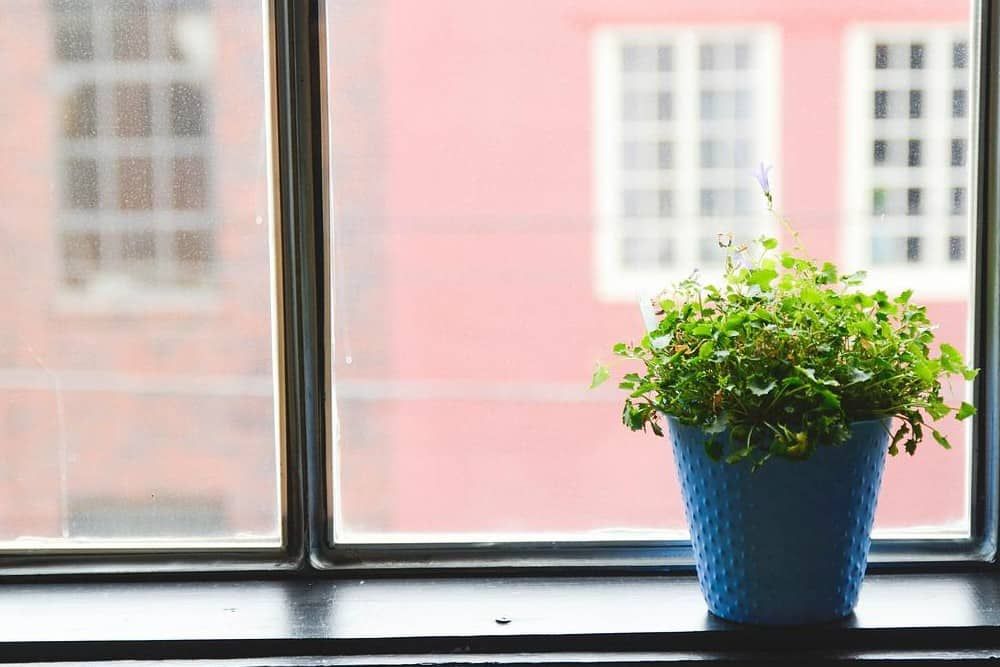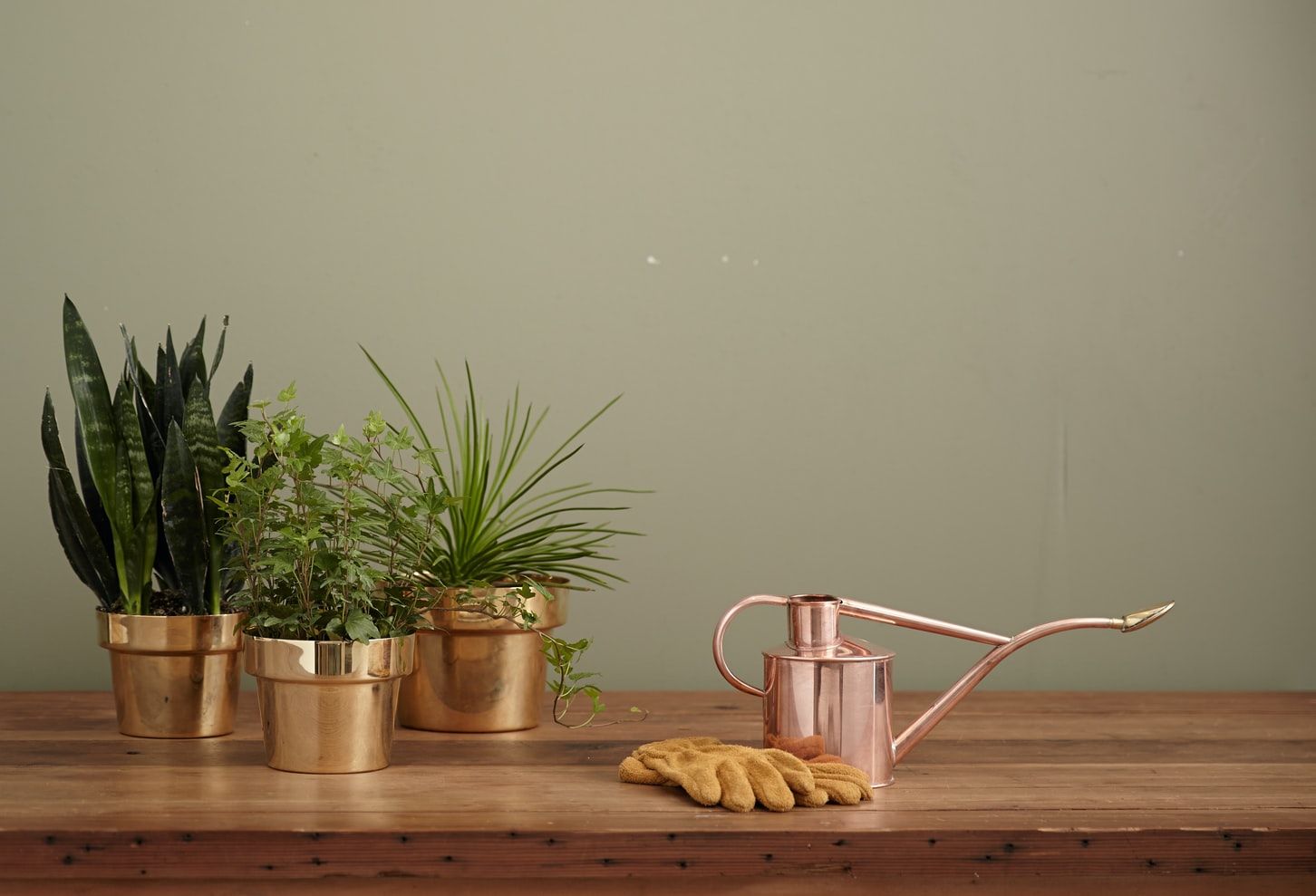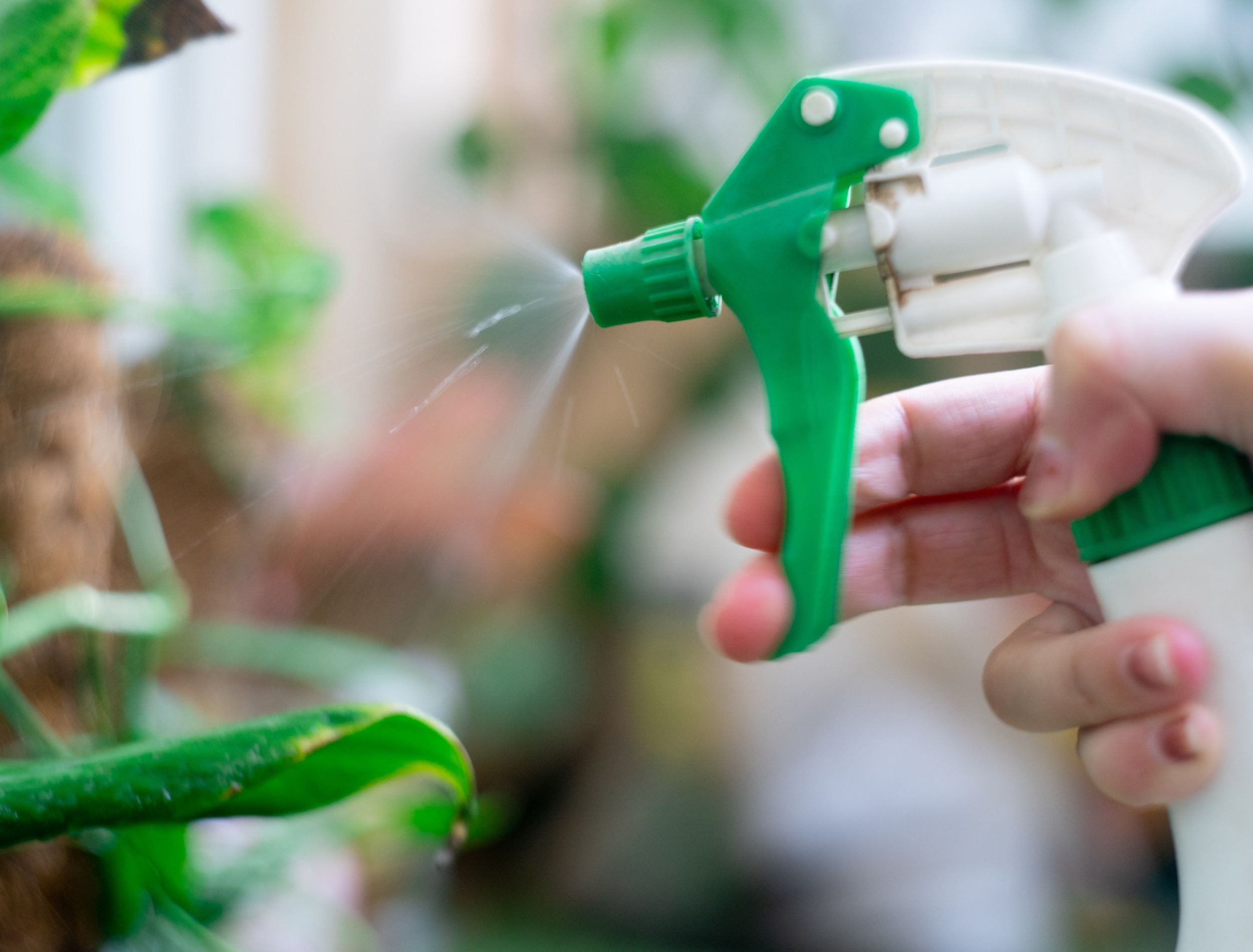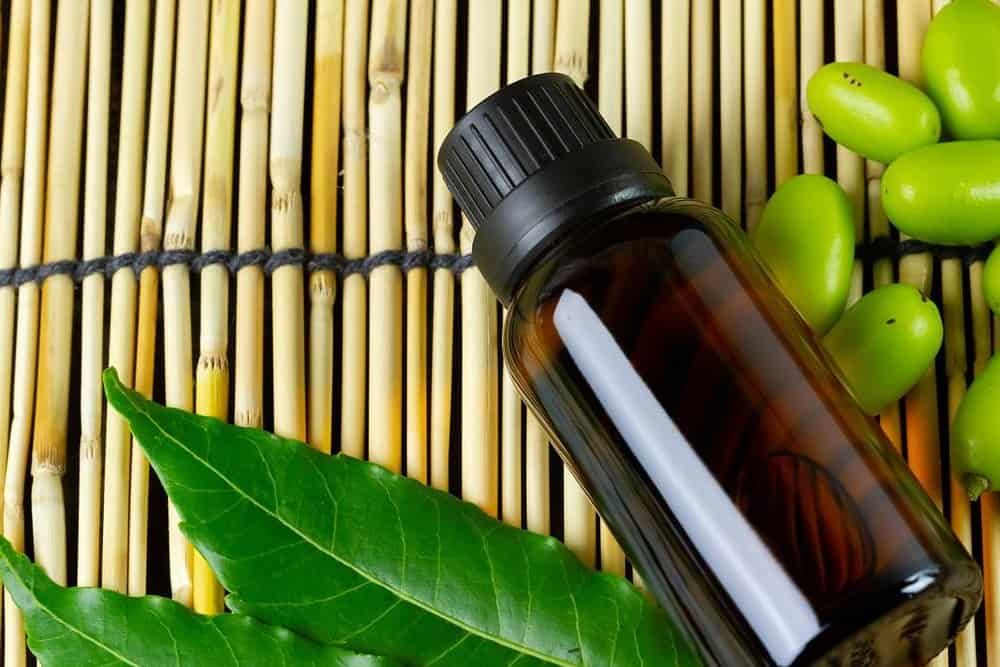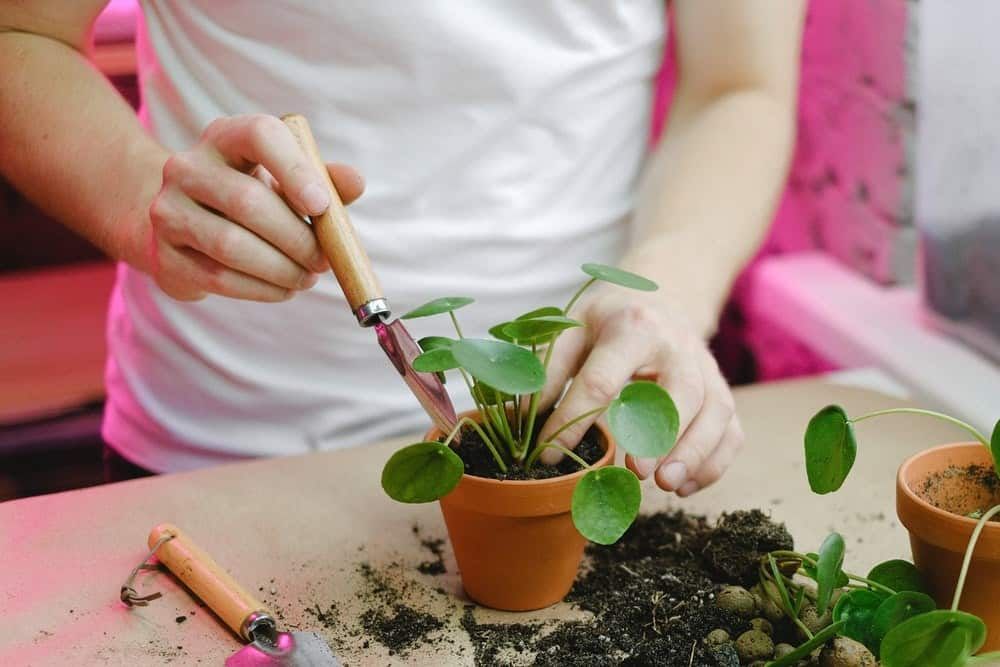Have you ever noticed a swarm of tiny flies erupt from your indoor plants when you water them? The culprits are likely soil gnats!
Luckily, these pests, also called fungus gnats, are less harmful and easier to get rid of than others. It's still best to take action to stop an infestation, as these guys are notorious for jumping from plant to plant! Find out how to get rid of these pesky flies below.
What Are Gnats?
Image credits: Heather Broccard-Bell via Canva
Gnats are tiny, black, flying insects that resemble small fruit flies or mosquitoes. You can find them hovering around the base of your indoor plants, as they are attracted to moist potting soil, and the delicious organic matter found within. Left untreated, gnats attack the hair roots of plants which in worst cases leads to poor plant growth as well as wilting and discolored leaves.
There are four stages of a gnat lifecycle: egg, larva, pupa, and adult. It is imperative to kill off gnats in all stages to successfully deal with an infestation. Adult gnats lay up to 200 eggs in the damp, top layer of soil. These eggs hatch into larvae which feed on the fungi that thrive in moist soil. Thankfully, the entire lifecycle of a gnat only lasts around two to three weeks, meaning eradication is possible in a short amount of time!
How do Gnats End up in Your Home?
Image credits: Iryna Imago via Shutterstock
Gnats hide in nursery soils and are brought into your home when you purchase new plants. Any bags of potting mix you bring indoors may also contain these little pests. Likewise, plants brought indoors after summering outdoors are also at risk.
Even if you've taken precautions with your potting soil and outdoor plants, gnats find their way through screen doors or windows and make their homes in any damp soil they find. Implement these simple prevention measures, and eradicate a gnat infestation by natural means if prevention fails!
How To Prevent Gnats Infesting Potting Soil
1. Quarantine New Plants
Image Credits: StartupStockPhotos via Pixabay
When you purchase new plants from the nursery, keep them separate from your other plants for two weeks. This is sufficient time to determine whether you've accidentally brought unwanted visitors!
Additionally, repotting nursery plants in fresh, sterile potting soil is a great way to prevent an infestation from spreading to your other indoor plant babies.
2. Monitor Soil Moisture
Image credits: Kaufmann Mercantile via Unsplash
Overwatering your indoor plants is the most common cause of gnat infestations. Always use pots with drainage holes to prevent excessive water retention in your soil. Allow the top layer of soil to dry out between waterings to deter adult gnats from laying their eggs.
Indoor plants require less water during the cooler months so, establish a seasonal watering routine to deter gnats from settling in the optimal soil conditions of an overwatered plant!
When in doubt, purchase a soil moisture gauge to help monitor the moisture levels of your indoor plant soils.
3. Bottom-Water
Image Credit: Brothers Welch via Shutterstock
Adult gnats love laying eggs in the damp, top layer of soil. Therefore bottom-watering is a great method to prevent gnat infestations!
Set your pot in a saucer of water and let it soak up to 30 minutes. This way, your plant soaks water upwards through the pot's drainage holes directly to the roots. Thus, your top layer of soil remains dry, creating an inhospitable environment for fungus gnats!
4. Keep Unused Potting Soil Sealed
Image credits: pixelshot via Canva
Gnats can not survive without oxygen. Keep your unused potting soil in air-tight containers as opposed to the bags they come in. This kills off any gnats already present and prevents other gnats from making new homes.
It is best not to re-use old potting soil if fungus gnats are a concern. The pennies you save are not worth the risk of an indoor pest infestation!
Materials Needed
Image credit: Memories Over Mocha via Shutterstock
- Yellow sticky traps
- Sand or gravel or stones
- Apple cider vinegar
- Shallow dish
- Hydrogen Peroxide
- Watering can or spray bottle
- Neem Oil
- Mild, liquid dish or castile soap
- Beneficial nematodes
- Sterile potting soil
How To Kill Gnats in Potting Soil
1. Yellow Sticky Traps
Image credits: Akchamczuk via Canva
When prevention fails, the next step is to attack your gnats in all phases of their lifecycle. Adult gnats are attracted to the color yellow. Use yellow sticky traps to alert you of a gnat problem and eradicate adult gnats.
Place yellow sticky traps directly above the top layer of soil and replace them every four to six weeks as they fill with dead gnats. It prevents gnats from jumping plant to plant and taking over your entire indoor garden!
2. Soil Covers
Image credits: JIB Liverpool via Shutterstock
Make the top layer of your soil inhospitable to gnats by covering it with a layer of sand or gravel. It creates a dry environment free of nutrient-rich fungi that gnats need for survival. You can also purchase gnat barrier top dressings, which are non-toxic soil covers designed to eradicate gnats. Alternatively, dress your top layer of soil with decorative stones to add aesthetic appeal while curbing your pest problem!
3. Apple Cider Vinegar
Image credits: Alter_photo via Canva
Apple cider vinegar is great for catching fruit flies and gnats too! Mix approximately 1/2 cup warm water, two tablespoons of apple cider vinegar, one tablespoon sugar, and six drops of liquid dish soap in a shallow bowl. This sugary mixture entices adult gnats who become trapped in the sticky dish soap.
4. Hydrogen Peroxide
Image credits: lakshmipathi lucky via Canva
Hydrogen peroxide is a commonly found household item that is cheap and safe for almost all houseplants. It is super effective for killing gnats in their larval stage. Simply mix one part hydrogen peroxide, and four parts water in a spray bottle and saturate the top layer of soil around your plant. A few applications of this treatment should solve your gnat larvae!
5. Neem Oil/DIY Insecticidal Soap
Image Credits: Ninetechno via Pixabay
Neem oil is another fantastic ingredient that may be diluted and used on infested soil. Diluted mixes are available in sprays, or you can dilute your neem oil concentrate. Spray down the top layer of soil to kill off tiny gnat larvae within!
If neem oil fails to solve the problem, create a DIY insecticidal soap out of a mild, liquid dish or castile soap. Simply mix a few drops into your watering can and water your infected plant. When applying more than one treatment, allow your soil to dry out between uses to prevent overwatering!
7. Beneficial Nematodes
Image credits: Jonathan Steinbeck via Canva
Beneficial Nematodes are naturally occurring, microscopic organisms that attack gnats in their larval and pupal phase. Fungus gnat nematode strains may be purchased and added to your watering can. This is a great alternative to using harmful pesticide sprays!
8. Replace Soil
Image Credits: Anna Shvets via Pexels
When all else fails, removing the infested soil is the best course of action! Depending on the severity of your infestation, you may choose to remove the top layer of soil or repot your plant entirely. Dispose of any potentially infested soil outdoors in a sealed container.
Gnat's No More!
It's no fun having a swarm of gnats attacks your face when you water your houseplants! As with other pest problems, prevention is key! Quarantine or repot new plants you buy from the nursery and try the bottom-watering technique.
When all else fails, try infusing your soil with natural ingredients known for eradicating gnats in all phases of their life cycle. Or simply remove the issue by replacing infested soil with fresh, sterile potting soil.
Enjoy your happy, healthy plants that are gnat-free!

